Which Is the Healthiest Energy Drink? Real Ingredients, No Hype
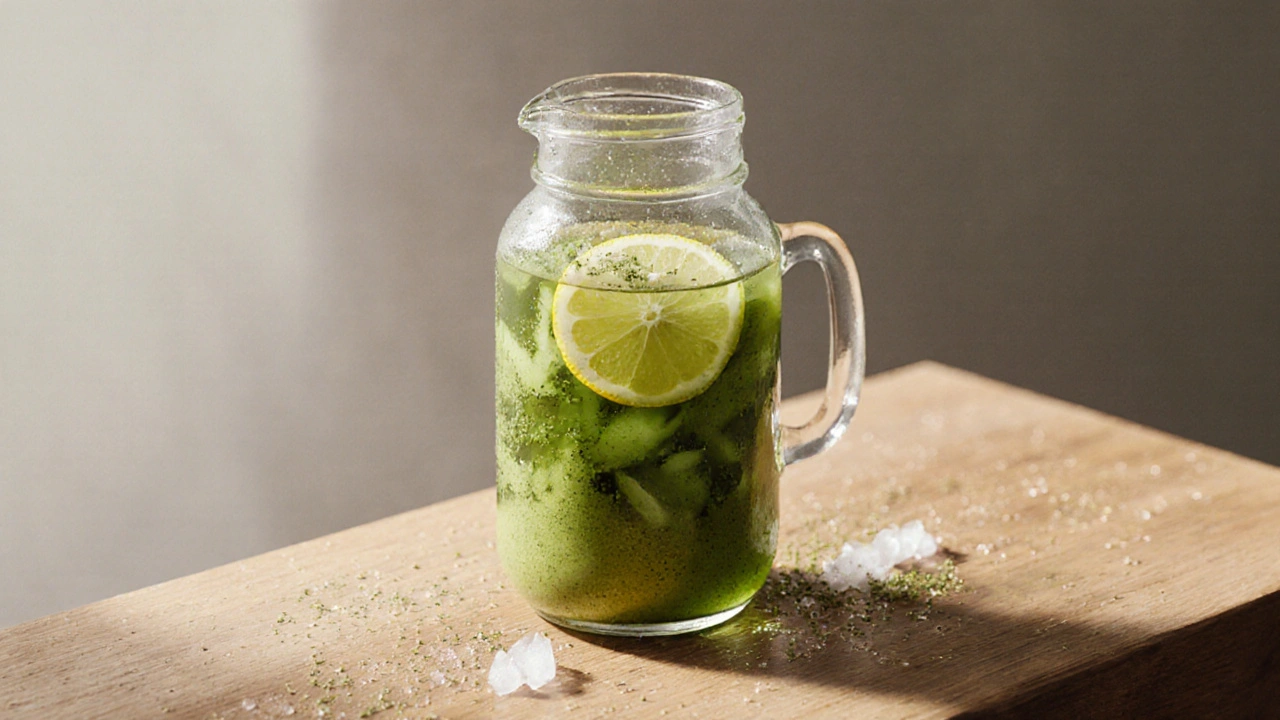
Let’s cut through the noise: most energy drinks aren’t healthy. They’re packed with sugar, artificial colors, and enough caffeine to make your heart race. But that doesn’t mean you have to give up energy entirely. There are real options out there that actually support your body instead of draining it. So which is the healthiest energy drink? The answer isn’t about brand names-it’s about what’s inside the can.
What Makes an Energy Drink Healthy?
A healthy energy drink doesn’t rely on sugar spikes or synthetic stimulants. It gives you steady energy without the crash. That means looking at four key things: sugar content, caffeine source, added ingredients, and nutritional value.
Sugar is the biggest red flag. A typical energy drink has 27-40 grams of sugar-about 7-10 teaspoons. That’s more than the WHO recommends for an entire day. Healthy alternatives use under 5 grams of sugar, or better yet, none at all. They get sweetness from stevia, monk fruit, or erythritol-natural, zero-calorie sweeteners that don’t spike blood sugar.
Caffeine matters too. Not all caffeine is created equal. Synthetic caffeine in most energy drinks hits fast and hard. Natural caffeine from green tea, green coffee bean, or guarana releases more slowly. It’s gentler on your nervous system and less likely to cause jitters or anxiety.
Then there’s the rest of the label. Watch out for artificial flavors, preservatives like sodium benzoate, and mysterious ‘energy blends’ that hide doses of taurine, L-carnitine, or B-vitamins. These aren’t inherently bad-but if they’re listed without amounts, you’re guessing what you’re consuming.
True health-focused drinks include real nutrients: electrolytes from coconut water, B-vitamins in active forms like methylcobalamin (B12), and antioxidants from matcha or citrus peel. These don’t just give energy-they help your body recover and function better.
Top 5 Healthiest Energy Drinks (2025)
Here are the five drinks that actually meet the criteria for being healthy-based on ingredient transparency, third-party testing, and real-world feedback from athletes, nurses, and busy parents.
- MatchaBar Hustle - 100% organic matcha green tea powder, 120mg natural caffeine, 0g sugar, 50mg L-theanine for calm focus. Comes in recyclable aluminum cans. No additives. Just tea.
- Kill Cliff IGNITE - 150mg caffeine from green coffee bean, 100% daily B-vitamins, 100mg magnesium, 0g sugar. Sweetened with stevia and erythritol. FDA-registered as a dietary supplement. Popular with endurance athletes.
- Zevia Energy - 120mg caffeine, 0g sugar, sweetened with stevia. Contains B-vitamins and ginseng. Available in 10 flavors. No preservatives. Third-party tested for heavy metals.
- Reign Total Body Fuel - 300mg caffeine (high, but clean), 10g BCAAs, zero sugar, electrolytes, CoQ10. Uses natural flavors and colors. Popular with gym-goers who want endurance without crash.
- Hydroxycut Black Energy - 200mg caffeine from green coffee bean, 100mg L-theanine, 5g sugar (from fruit juice), no artificial ingredients. Designed for mental clarity over brute stimulation.
These drinks don’t claim to be magic. They don’t promise 12-hour energy bursts. They deliver clean, sustained energy with ingredients you can recognize and trust.
What to Avoid at All Costs
Some brands market themselves as ‘natural’ or ‘clean’-but still pack dangerous ingredients. Here’s what to skip:
- Red Bull, Monster, Rockstar - Each has 27-54g sugar and synthetic caffeine. Also contain artificial colors like Yellow 5 and Blue 1, linked to hyperactivity in kids.
- 5-hour Energy - 200mg caffeine in a tiny bottle, but it’s synthetic. No nutrients. Just stimulants. Leads to crashes, headaches, and dependence.
- Bang Energy - 300mg caffeine, zero sugar, but contains ‘super creatine’ and ‘super amino acids’ with no disclosed amounts. Also has sucralose, an artificial sweetener that may disrupt gut bacteria.
- Any drink with ‘energy blend’ or ‘proprietary formula’ - If the label doesn’t list exact amounts of each ingredient, it’s hiding something. That’s not transparency-it’s a loophole.
These drinks might give you a quick rush, but they’re not sustainable. They train your body to rely on artificial stimulation instead of natural energy cycles. Over time, that leads to fatigue, anxiety, and sleep issues.
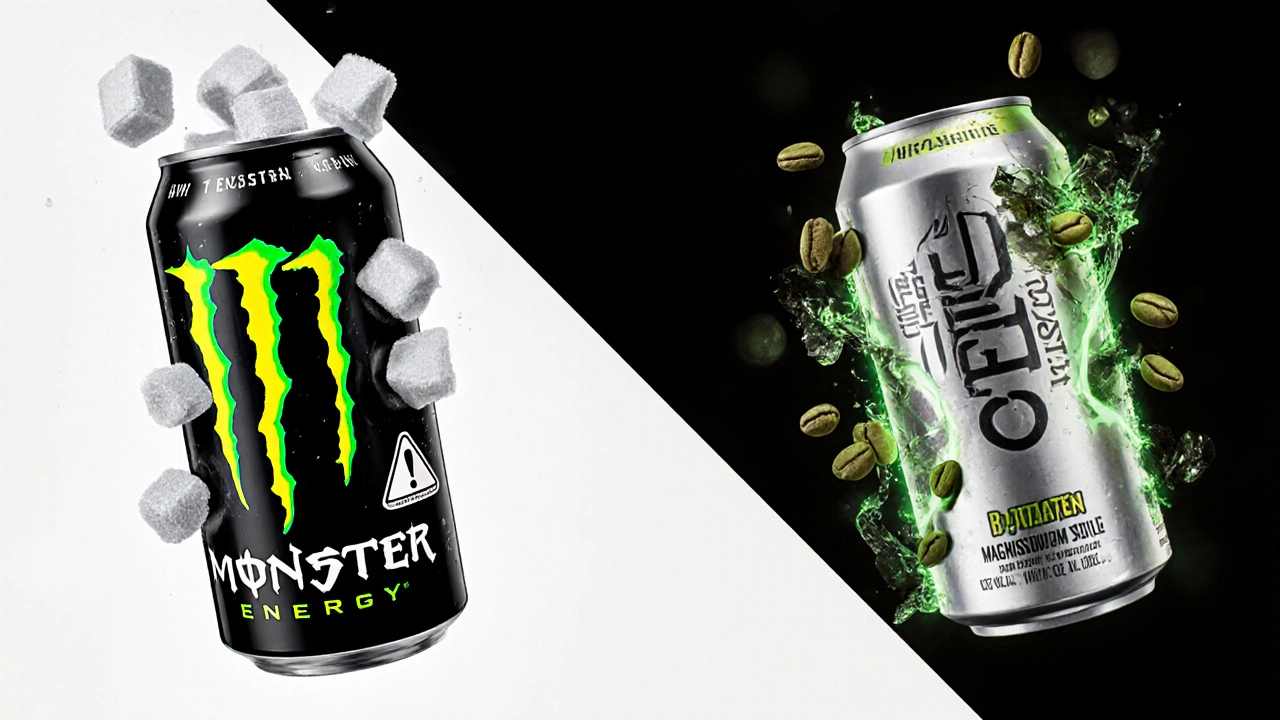
How to Choose Based on Your Needs
Not everyone needs the same thing. Your ideal healthy energy drink depends on your lifestyle.
If you’re a student pulling all-nighters, go for MatchaBar Hustle. The L-theanine balances the caffeine, helping you stay focused without shaking. No crash means you can sleep better afterward.
If you’re an athlete or fitness enthusiast, Kill Cliff IGNITE or Reign are better. They include electrolytes and BCAAs to support recovery. The magnesium helps prevent cramps, and the clean caffeine won’t interfere with your heart rate during workouts.
If you’re a busy parent or remote worker, Zevia Energy is simple and reliable. It’s low-cost, widely available, and tastes like soda without the sugar hangover. Perfect for mid-afternoon slumps.
If you’re cutting sugar or managing diabetes, avoid anything with fruit juice or hidden sugars. Stick to stevia- or erythritol-sweetened options. Check labels for ‘evaporated cane juice’ or ‘agave nectar’-those are just sugar in disguise.
Can You Make Your Own Healthy Energy Drink?
Yes-and it’s cheaper, tastier, and more effective than anything in a can.
Here’s a simple recipe:
- 1 cup cold brewed green tea (cooled in fridge)
- 1/2 tsp matcha powder (for extra caffeine and antioxidants)
- 1/4 tsp sea salt (for electrolytes)
- 1 tsp lemon juice (vitamin C and flavor)
- Stevia to taste (optional)
- Ice and a splash of sparkling water if you like fizz
This has about 100mg caffeine, zero sugar, 200mg potassium, and no additives. You control everything. It costs less than $0.50 per serving.
Or try coconut water + a pinch of sea salt + a shot of cold brew. That’s nature’s electrolyte drink with a caffeine boost. No labels. No mystery ingredients.
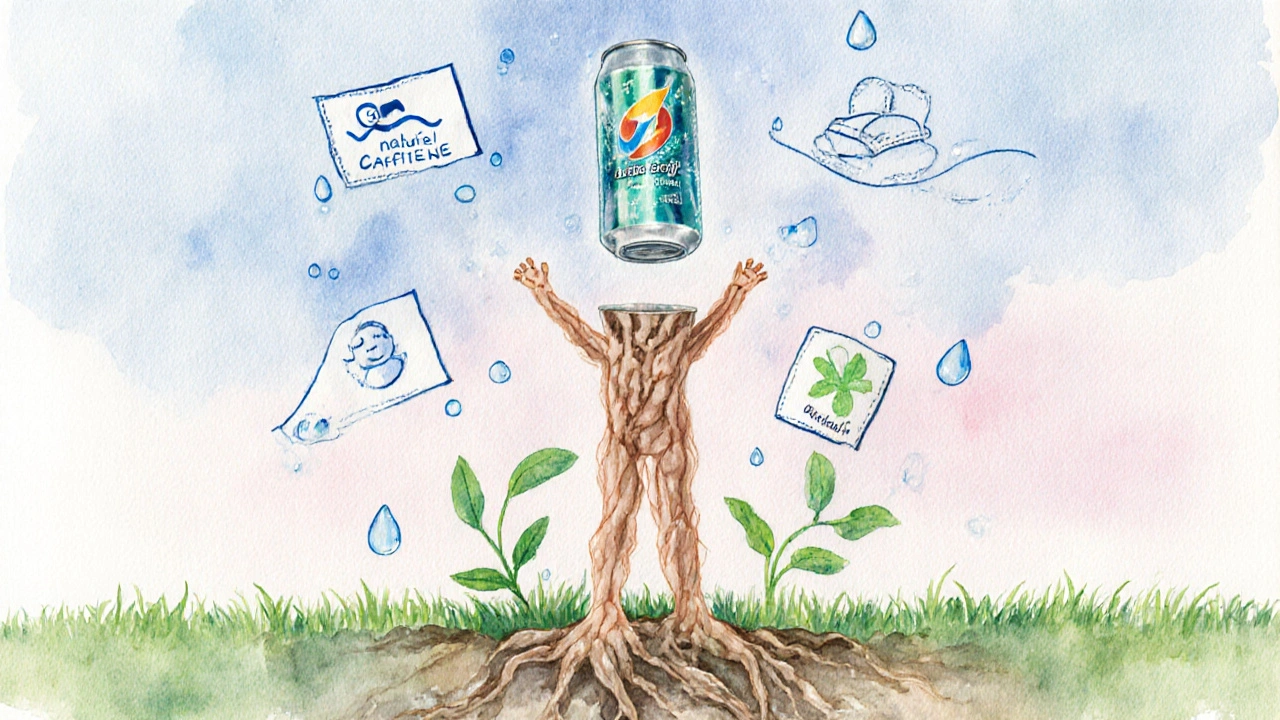
Why Most ‘Healthy’ Energy Drinks Still Fall Short
Even the best energy drinks are still a Band-Aid. They don’t fix the root problem: poor sleep, dehydration, or nutrient deficiency.
Drinking an energy drink to get through the day is like filling a leaky bucket with a hose. You’re pouring in energy while your body leaks it out through stress, lack of rest, and bad food choices.
Real health comes from:
- 7-8 hours of sleep per night
- Drinking enough water (half your body weight in ounces)
- Eating protein and fiber with every meal
- Moving your body for 20 minutes daily
These habits give you lasting energy. Energy drinks? They’re a backup plan-not a solution.
That’s why the healthiest energy drink is the one you don’t need to drink.
Final Verdict: The Healthiest Choice
There’s no single ‘best’ energy drink. But if you’re looking for the most balanced, transparent, and nutritionally supportive option, Kill Cliff IGNITE takes the lead. It’s the only one with clinically relevant doses of magnesium and B-vitamins, clean caffeine, and zero artificial junk.
But if you want simplicity and affordability, Zevia Energy is the most accessible. And if you want the most natural source of energy, make your own with green tea and electrolytes.
Remember: energy isn’t something you buy. It’s something you build. Choose drinks that support that process-not ones that pretend to replace it.
Is there a sugar-free energy drink that’s actually healthy?
Yes. Drinks like Kill Cliff IGNITE, Zevia Energy, and MatchaBar Hustle contain zero sugar and use natural sweeteners like stevia or erythritol. They also include real nutrients like B-vitamins, magnesium, and antioxidants. Avoid drinks with artificial sweeteners like sucralose or aspartame-these can affect gut health and insulin response over time.
Can energy drinks be part of a healthy diet?
Occasionally, yes-but not daily. Even the healthiest energy drinks are stimulants. Relying on them regularly can disrupt sleep, increase anxiety, and train your body to need artificial boosts. Use them as a tool for rare, high-demand moments-not as a daily habit.
What’s the safest caffeine amount in an energy drink?
The FDA recommends no more than 400mg of caffeine per day for healthy adults. A single energy drink should contain no more than 150-200mg. Anything over 300mg (like Bang or Reign) should be used sparingly, especially if you’re sensitive to caffeine or have heart conditions.
Are natural energy drinks better than synthetic ones?
Yes. Natural caffeine from green tea, coffee beans, or guarana releases slowly, giving you steady energy without spikes or crashes. Synthetic caffeine (often labeled as ‘caffeine anhydrous’) hits fast and hard, increasing the risk of jitters, heart palpitations, and dependency. Natural sources also come with antioxidants and other compounds that support your body.
Why do some healthy energy drinks cost more?
They use organic, non-GMO, and third-party tested ingredients. No cheap fillers, no artificial preservatives, no hidden sugars. The packaging is often eco-friendly, and production follows strict quality standards. You’re paying for transparency, purity, and performance-not just caffeine.
Next Steps: What to Do Today
Don’t wait for the perfect energy drink. Start by checking the label of your current one. Look for sugar, caffeine source, and additives. If it has more than 5g of sugar or a list of unpronounceable chemicals, swap it out.
Try one of the top five drinks listed above for a week. Notice how you feel-your energy, your focus, your sleep. Then make your own version using green tea and electrolytes. You’ll save money and feel better.
Energy isn’t something you buy. It’s something you earn. Choose drinks that help you earn it-not ones that pretend to give it to you.

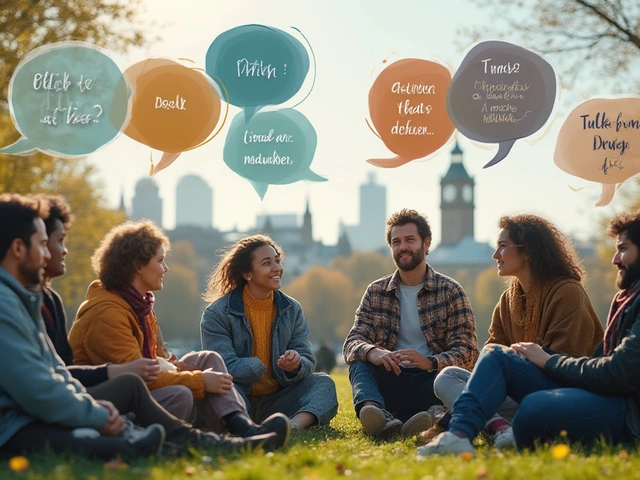

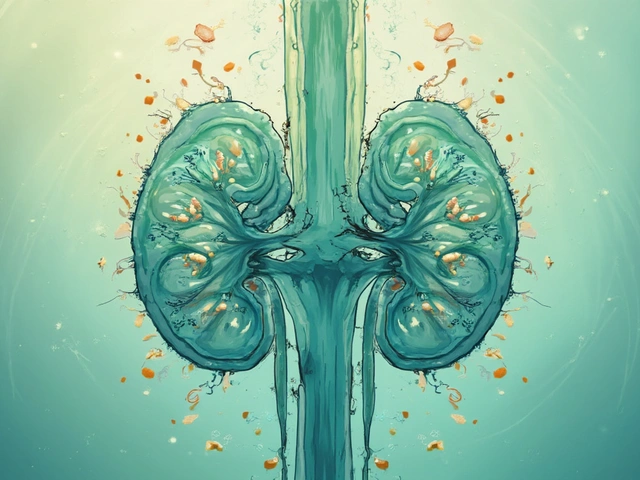
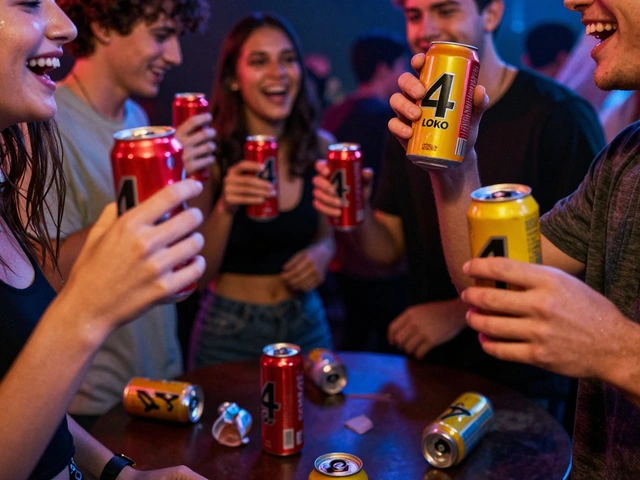

Comments (14)
poonam upadhyay
21 Nov 2025
Okay but let’s be real-Kill Cliff IGNITE is just a fancy vitamin shot with caffeine and a side of delusion. Who even drinks this stuff? I tried it once and my tongue felt like it was scrubbed with sandpaper. Stevia is not sweet, it’s a betrayal. And don’t get me started on ‘natural flavors’-that’s just corporate speak for ‘we cooked up something in a lab and called it plant-based.’
Also, why is everyone acting like energy drinks are the new holy grail? You’re not a robot. You’re a human. You need sleep. You need food. You need to stop pretending that swallowing a can of chemical glitter is somehow ‘health-conscious.’
And don’t even get me started on the ‘recyclable aluminum cans.’ Please. You think that makes it ethical? You think that erases the fact that you’re still addicted to artificial stimulation? I’ve seen people chug these like they’re water while scrolling TikTok at 3 a.m. That’s not wellness. That’s performance art for burnout.
Also, why is no one talking about how these drinks are marketed to teens? You think a 16-year-old needs 150mg of caffeine? They’re not athletes. They’re kids trying to stay awake in class. And now they’re on a sugar-free, stevia-fueled, magnesium-laced rollercoaster that makes their heart skip beats? Brilliant. Just brilliant.
And don’t tell me ‘it’s better than Monster.’ That’s like saying a cigarette with filters is healthier. It’s still a cigarette.
I miss the days when people just drank coffee. Real coffee. With milk. And sugar. And no one pretended it was a superfood.
Also, matcha? Please. That’s just green tea powder. You can buy it for $5 on Amazon. Why pay $4 for a can that tastes like wet grass?
And who the hell is this ‘Reign’ for? Gym bros who think they need 300mg of caffeine to lift a dumbbell? You don’t need energy drinks. You need a nap. And a therapist.
Also, why is no one mentioning the environmental cost of these cans? Aluminum is mined. Mining destroys ecosystems. You’re not saving the planet by drinking ‘eco-friendly’ energy drinks. You’re just making it prettier while you poison yourself.
And let’s not forget: if you’re drinking this to ‘boost focus,’ you’re probably already in a toxic work culture that expects you to be a machine. The real solution isn’t a drink. It’s quitting your job.
Also, ‘natural caffeine’? That’s not a thing. Caffeine is caffeine. Whether it’s from a bean or a test tube, it still blocks adenosine receptors. Stop pretending you’re doing science when you’re just buying marketing.
And the ‘make your own’ recipe? Cute. But who has time for that? I’m a single mom working two jobs. I don’t have time to brew tea, measure salt, and chill matcha. I need something that works. And if that’s a can of poison, then so be it.
Also, why are we even having this conversation? We’re not fixing the problem. We’re just giving people better poison.
And don’t tell me ‘it’s about choice.’ Choice is a luxury. Most people don’t have the luxury of sleep, water, or healthy food. So they drink this. And you’re here acting like you’re the moral compass? Nah. You’re just another person selling hope in a can.
Also, why is no one talking about the mental health crisis? You think people drink this because they want to? No. They drink it because they’re exhausted. And no one’s helping them. So stop pretending this is about health. It’s about survival.
Anand Pandit
21 Nov 2025
I really appreciate how detailed this post is. I’ve been switching to Kill Cliff IGNITE for my morning workouts and honestly, the difference is night and day. No jitters, no crash, just steady focus. I used to rely on Red Bull and now I feel like my body actually respects me.
Also, the coconut water + cold brew hack I learned from this? Game changer. I make a big batch on Sundays and it lasts me all week. Costs pennies and tastes amazing. No more sugar hangovers.
And yes-sleep and hydration are the real MVPs. I started tracking my water intake and sleeping 7+ hours and I don’t even need energy drinks anymore. Just a cup of tea and a walk outside. Magic.
Reshma Jose
22 Nov 2025
Yesss I tried Zevia last week and I’m obsessed. Tastes like a real soda but zero guilt. Also the matcha one is my new morning ritual-no more 2 p.m. slump. I used to think energy drinks were just for gamers and bros, but now I get it. It’s about clean fuel.
Also, the DIY recipe? I added ginger and it’s like a spa in a can. So good.
rahul shrimali
23 Nov 2025
Just drink water and sleep better
Eka Prabha
24 Nov 2025
Let’s analyze the structural hegemony of the ‘healthy energy drink’ industry. The entire paradigm is a neoliberal fabrication designed to commodify human fatigue. The promotion of ‘natural caffeine’ is a linguistic sleight-of-hand-a semantic camouflage for pharmacological dependency. The use of ‘third-party testing’ as a marketing trope functions as a pseudo-empirical legitimization of capitalistic exploitation.
Moreover, the suggestion that consumers can ‘make their own’ energy drink is a classic neoliberal trick: shifting responsibility from systemic failures (labor exploitation, sleep deprivation culture, food deserts) onto the individual, who is then coerced into DIY biohacking as a form of self-discipline.
Furthermore, the normalization of stevia and erythritol as ‘safe’ sweeteners ignores the emerging literature on gut microbiome disruption via non-nutritive sweeteners, particularly in longitudinal studies conducted by the European Food Safety Authority (2023).
The entire discourse is a distraction. The real issue is not the ingredients in the can-it’s the 16-hour workdays, the gig economy, the lack of paid sick leave, the absence of universal healthcare. Energy drinks are not the problem. The system is.
And yet, we are all complicit. We consume the myth of ‘clean energy’ because it absolves us of the moral burden of systemic critique. We buy into the illusion that we can optimize ourselves out of oppression.
It’s not about the can. It’s about the cage.
Bharat Patel
24 Nov 2025
There’s something poetic about how we’ve turned energy into a product to buy instead of a rhythm to live.
We used to wake with the sun, eat real food, move our bodies, rest when tired. Now we’re told to swallow a chemical to outrun our own biology.
It’s not that these drinks are evil. It’s that they’re symptoms. We’re not broken because we need caffeine. We’re broken because we’ve forgotten how to be human.
Maybe the healthiest drink isn’t in a can at all. Maybe it’s silence. Maybe it’s a long breath. Maybe it’s saying no to another meeting. Maybe it’s letting yourself be tired without guilt.
The body doesn’t need more stimulation. It needs more space.
Bhagyashri Zokarkar
26 Nov 2025
i tried the kill cliff one and my stomach felt like it was being eaten by ants for 3 hours?? like i dont even know what happened but i swear i think they put something in it?? like i read the label and it said magnesium and stuff but i think its a scam?? i think the company is owned by the same people who run the moon landing fakes?? like why does it say 'dietary supplement'?? that means its not regulated?? i think they're hiding something?? i had a dream last night that the can was whispering to me?? i think i need to go to the doctor??
also i saw a video on tiktok where someone said the aluminum cans are lined with poison?? and the stevia is made from genetically modified corn?? and the matcha is sprayed with pesticides?? i dont trust anything anymore
also my cousin said she got a rash from zevia?? and now i think all energy drinks are a government mind control experiment?? i think they want us to be hyper focused so we dont notice the truth??
also why do they all taste like chemicals?? i think my tongue is permanently damaged??
also i think the author is paid by the companies?? because why else would they write this??
also i just threw away my last can and i feel like i’m detoxing?? i think i’m going to cry
Rakesh Dorwal
27 Nov 2025
These so-called 'healthy' energy drinks? All foreign propaganda. The West wants us to believe we can fix our exhaustion with a can. But real Indians? We get energy from chai, from yoga, from family, from roots-not from aluminum cans made in America with stevia from China.
Matcha? That’s Japanese. Kill Cliff? American. Zevia? Made in California. We’re being sold a Western lie while our own traditions-turmeric milk, ashwagandha, black tea with ginger-are ignored.
And who profits? Big pharma. Big tech. Big energy drink conglomerates. They don’t care if you live or die. They just want your rupees.
Stick to homegrown. Drink masala chai. Sleep early. Walk barefoot on grass. That’s real energy. Not some chemically sweetened can with a ‘natural’ label.
India doesn’t need to copy the West’s burnout culture. We’ve had wisdom for thousands of years. Why are we forgetting it?
Vishal Gaur
27 Nov 2025
Okay so I read this whole thing and I’m kinda confused. Like I thought Kill Cliff had like 200mg caffeine but the post says 150? And then Reign says 300 but you said max is 200? So which is it? Also I bought Zevia and it tasted like medicine and I threw it out. Also I think the DIY recipe is dumb because who has time to chill tea? I’m a student. I have 5 minutes between classes. Also I think the author is just trying to sell books or something. Why is there so much info? It’s just a drink. I just want to not fall asleep in class. Also I think stevia is gross. Like why not just use sugar? At least sugar tastes good. And why are people acting like this is some life-changing revelation? I’ve been drinking Red Bull since I was 14 and I’m fine. My heart doesn’t skip. I sleep fine. Maybe it’s just me? Also I think the whole ‘you don’t need energy drinks’ thing is just rich people talking. I don’t have time to sleep 8 hours. I have two jobs. So what am I supposed to do? Starve? Also I think the ‘make your own’ thing is a scam. It’s more expensive than buying a can. And I’m broke. So yeah. I’m just confused now.
Nikhil Gavhane
28 Nov 2025
I just wanted to say thank you for writing this. I’ve been struggling with burnout for months. I was drinking two of those ‘healthy’ cans a day thinking I was being responsible. But after reading this, I realized I was just numbing myself. I’ve started drinking green tea with lemon and sea salt like you suggested. It’s not flashy. It doesn’t come in a cool can. But I feel… lighter. Like my body isn’t screaming anymore.
I still have bad days. But now I don’t reach for a can. I reach for a blanket. Or a walk. Or a nap.
You didn’t just write about drinks. You wrote about healing.
Rajat Patil
29 Nov 2025
It is my considered opinion that the consumption of energy beverages, regardless of their purported nutritional profile, represents a deviation from the natural rhythms of human physiology. The human organism is not designed for sustained artificial stimulation. Rather, it thrives upon regular rest, adequate hydration, and the ingestion of whole, unprocessed foods.
The notion that one may compensate for chronic sleep deprivation through the ingestion of caffeine and electrolytes is, in my view, a form of self-deception. One cannot outdrink one’s exhaustion.
Therefore, I propose that the most prudent course of action is not to seek a better energy drink, but to cultivate a lifestyle in which such a drink becomes unnecessary.
Thank you for your thoughtful and comprehensive analysis.
deepak srinivasa
30 Nov 2025
What if the real question isn’t which drink is healthiest-but why we feel so depleted that we need a drink at all?
Is it the work? The screen time? The loneliness? The pressure to be productive 24/7?
Maybe we’re not looking for better ingredients. Maybe we’re looking for permission to rest.
And if we could give ourselves that permission… would we even care what’s in the can?
pk Pk
1 Dec 2025
Love this breakdown. Seriously. I’ve been recommending Kill Cliff to my team at work. One guy switched and said he stopped having afternoon headaches. Another said his anxiety dropped. That’s not magic-that’s clean fuel.
But here’s the thing: don’t just swap drinks. Start small. Drink a glass of water before your can. Take a 5-minute walk after lunch. Breathe before you reach for the next one.
These drinks aren’t the enemy. The habit is. And habits can be changed. You’ve got this.
poonam upadhyay
2 Dec 2025
And yet… I still buy it. Every Monday. Because I’m tired. And I have a 7 a.m. Zoom call. And my baby woke up at 3 a.m. again. And I’m pretending I’m fine.
So I drink it. And I feel guilty. And I tell myself it’s ‘better than Monster.’
And that’s the real tragedy.